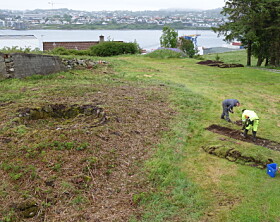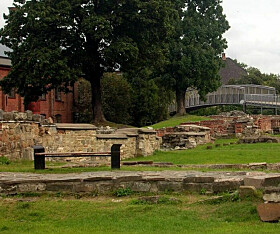
Secrets in the crawl space below Norway's oldest cathedral
Here's what archaeologists found under the floor of the 12th century Stavanger Cathedral
Crawling around here in pitch darkness in 1967, an architect bumped into bones and skeletons.
The construction of Stavanger Cathedral in southwestern Norway began just a few decades after the Viking Age ended. In 2021, archaeologists finally excavated the crawl space under the cathedral’s large nave. What did they find?
Their report is now ready.
But first let's jump back a few decades – because there is someone who has been under the floor of the church before.
It is 1967, and Perry Rolfsen has just been hired as an archaeologist at the Stavanger Museum.
A thought keeps swirling around in his head: Could there be anything interesting under the floor of the cathedral?
Rolfsen knows about a small opening where it just might be possible to enter the crawl space under the floor of the cathedral. An electrician had just been in there.
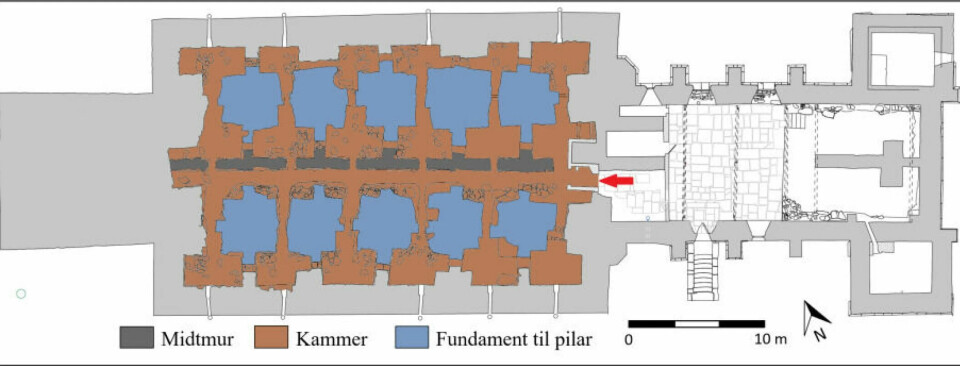
One Saturday afternoon in 1967, Rolfsen is all alone in the great cathedral.
He has procured a work light with a long extension cord, the Museum of Archaeology at the University of Stavanger write on their webpages.
“I turned on the light and crawled in through the opening. The lamp provided good light, and there were lots of corridors and chambers."
"The roof was low, and I had to crawl and slither between stone walls and over remains of coffins and skeletons. And quite right, there were interesting things to observe here.”
Then something unexpected happens: the light goes out.
Everything goes pitch-black.
Rolfsen is all alone with skeletal remains in the crawl space under the 12th century church.
"I get slightly panicked, because I lost the cord and the light.”
" I start crawling around and fumbling for the cord. I get a clammy feeling that the roof and stone walls are pressing in."
"To orient myself, I listen for the voices and footsteps of cathedral visitors. At first I assume that the visitors are walking back and forth in the aisle in an east-west direction, but then sounds come from other people walking back and forth in different directions. I get disoriented, crawling around aimlessly and bumping into nails, small and large rocks, along with coffins and skeletal remains."
"I keep ending up in one of the many chambers under the side naves, and probably also made it all the way west towards the armoury. I am trapped in a labyrinth, and totally confused.”
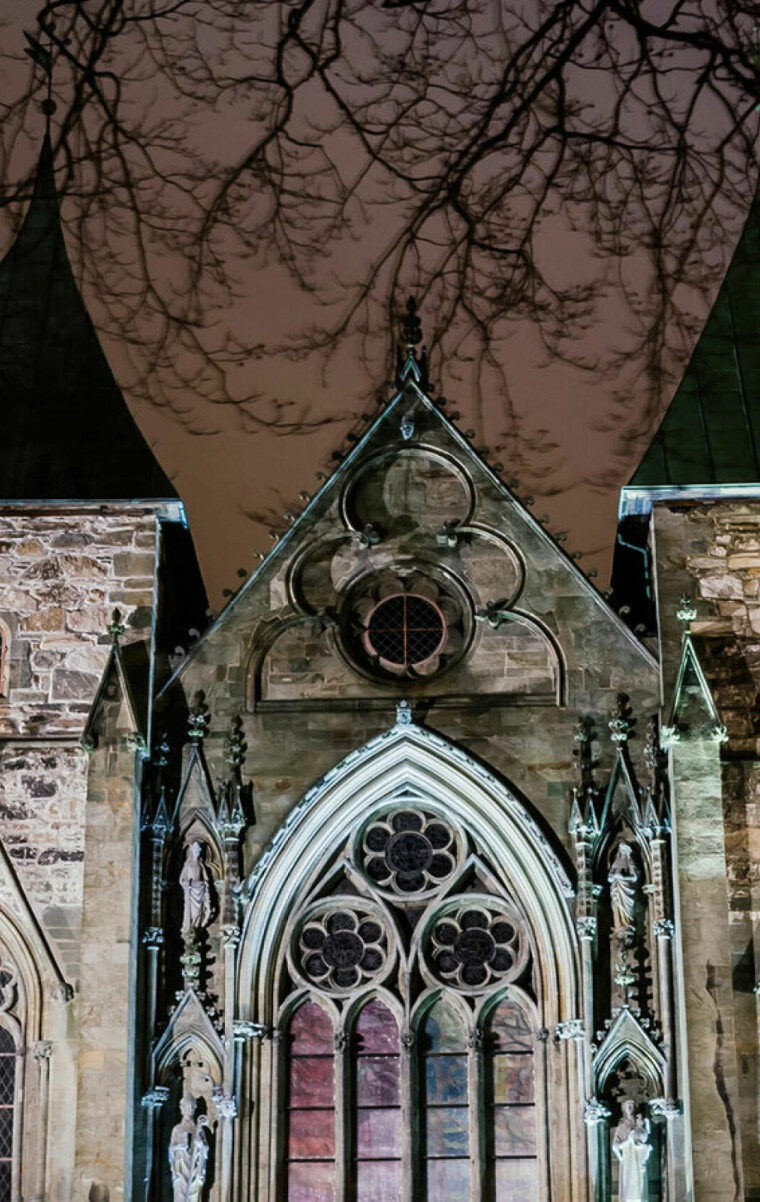
The 12th century was the first decade of the great and mighty cathedrals.
The church in Stavanger is unique. Much of it is still exactly as it was during the Middle Ages.
"And then, by chance, I find the extension cord."
“Hugely relieved, I follow it to the opening. After two rough hours, I was once again outside the Cathedral – with blood dripping from a gash in my cheek, covered in dirt and with a torn shirt and trousers."
“Back out in the open, I could smile, because everything I’d observed was stuck in my memory."
A few days later in 1967, the archaeologist spoke to church warden Ole Tingdal about what had happened to him.
The church warden said that it was he who had disconnected the cord, because he was concerned about fire safety.
The church warden had no inkling that a bloody archaeologist was crawling around among human bones under the church floor.
Stavanger's obscure past
Rolfsen had found out a lot under the cathedral on this particular Saturday in 1967.
He now knew that the cathedral floor rested on top of stone walls. He also knew that between these walls were open chambers.
At the bottom of the chambers and in the corridors between them lay the remains of human skeletons.
Human bones protruded from beneath the stone walls.
Rolfsen’s colleagues were particularly excited that he was able to establish that there was a layer of soil under the floor of the church. More finds might well be found there!
The origins of the city of Stavanger had long been obscure.
Did the answer rest under the old church?
The majority of architectural historians have believed that the oldest parts of the Cathedral in Stavanger can be dated to the 1120s, coinciding with the establishment of Stavanger's Catholic bishopric.
The art historian C. Hohler, on the other hand, claimed that details in the nave's eastern part are typical for the end of the 11th century.
The last Viking king, Harald Hardråde, died in 1066. We are thus brought almost all the way back to what we like to call the Viking Age.
Investigations of the crypt under the church choir were started in 1967 and 1968, following Rolfsen's discoveries in the crawlspace. No funding was available to investigate the larger crawl space under the nave itself at that time.
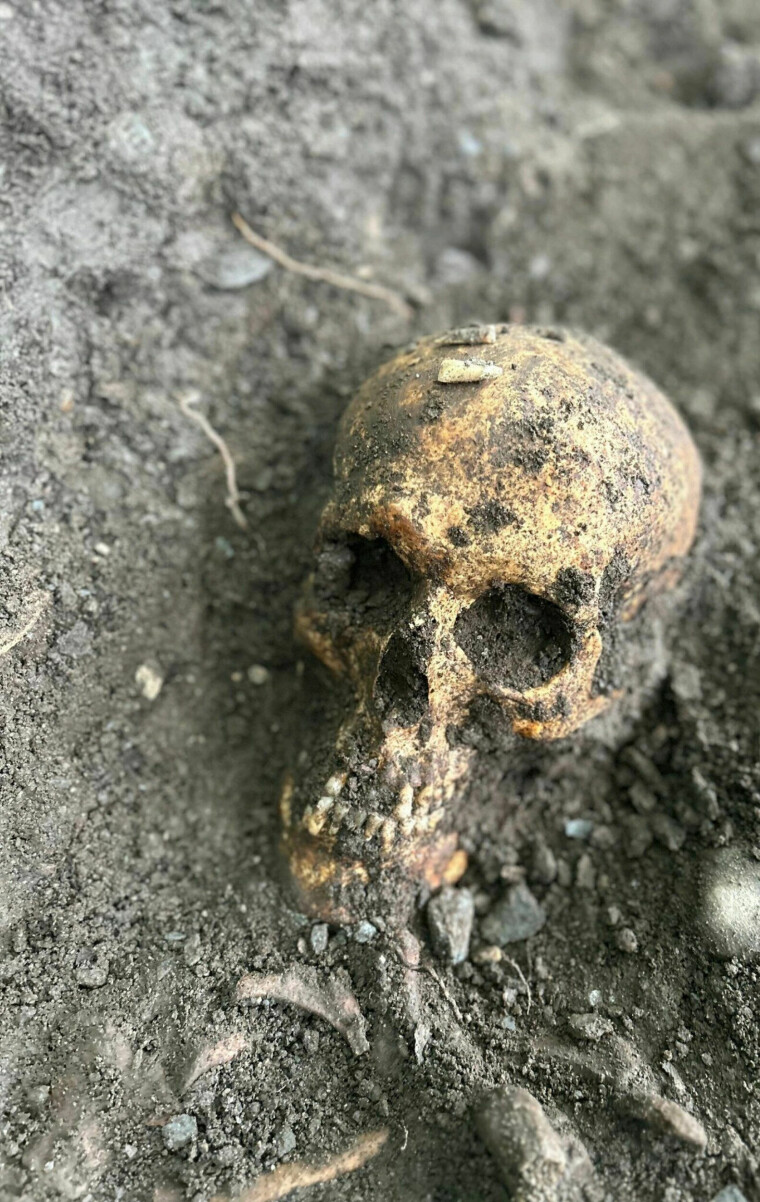
Who are these people who were buried at the church long ago?
More than 30 Christian skeletons
Down in the crypt under the choir, Rolfsen and his colleagues found 28 Christian graves with preserved skeletons at the time. More than 30 skeletons were discovered in all.
Radiocarbon dating showed a skeletal time span from the early 8th century to the early 12th century.
The graves were probably there before the cathedral was begun, most likely connected to an older wooden church on the site.
“The graves we found under the choir were partly on top of each other,” says Rolfsen, who recalls that there were a large number of coffins.
“When we sent the material to the Anatomical Institute in Oslo in 1968, the skeletons were unfortunately mixed up with skeletons from other places in the country.”
“This was a sad situation,” he says.
Late last year, Rolfsen wrote an article for the journal Viking about what happened.

The skeletons found under the choir in the church in 1967 ranged in age from the early 9th century to the early 12th century.
Who was buried here?
Historians and archaeologists know the names of a number of people who have been buried under the floor of Stavanger Cathedral. But none of them can be identified with a specific burial site.
Most of Stavanger's bishops might have been buried here.
However, researchers only have information about their burials from the 15th century. Bishop Audun Eyvindsson, who died on 3 November 1445, was buried under the church.
One of the earliest names is Arnbjørg Heimnæs. She was laid under the church floor around 1280.
Thorgeir Peterssøn’s will at Spånheim in Hardanger, which is dated 24 August 1310, mentions that he was to be buried in the cathedral.
Rolfsen followed by other archaeologists
Since Rolfsen made his way into the crawl space in 1967, a few other archaeologists have followed suit below the nave itself.
They reported finding the remains of wood and textiles, as well as human skeletal material. They also observed loose bones in several places.
All the skeletons in the crypt under the Cathedral were documented when the archaeologists finally opened up the entire floor of the nave in 2021.
Loose bones were collected, and everything was treated as respectfully as possible.
However, graves and skeletons were not what the archaeologists prioritized most down below.
They discovered traces of two buildings from the Viking Age that they found even more interesting. These buildings must have stood where Stavanger Cathedral stands today.
The archaeologists also found the remains of bronze casting. The bronze was used to make fine objects such as suit buckles and jewellery.
“Our findings strengthen the interpretation that Stavanger was already a place with a certain status and social function in the Viking Age and up until the cathedral was built,” archaeologist Haldis Hobæk said last year.
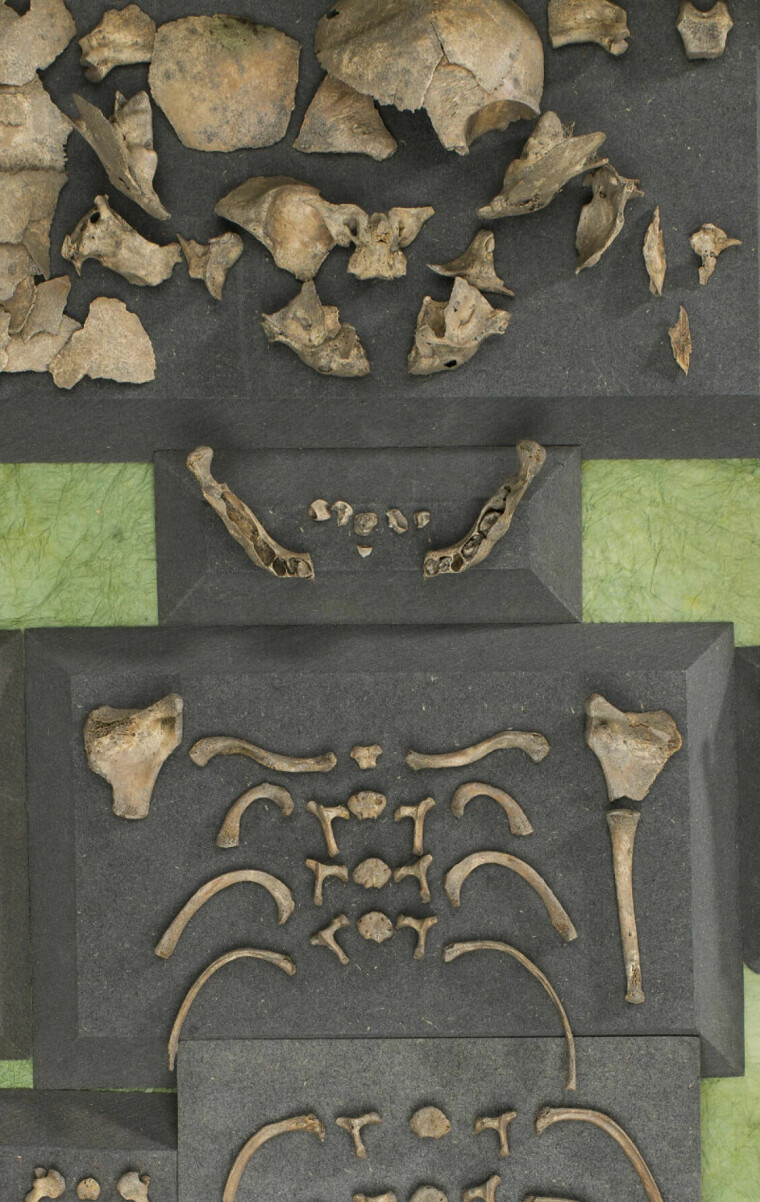
Among the skeletons found was this one – of an infant.
Did Sigurd Jorsalfar pay for the church?
Who decided that Stavanger Cathedral should be built almost a thousand years ago?
The Kings’ sagas relate that when Sigurd Jorsalfar - Sigurd the Crusader - wanted to marry his second wife, Cecilia, in 1128, he was refused by the bishop in Bergen.
Sigurd then turned to the bishop in Stavanger who said yes, on the condition that Sigurd would give a larger sum of money towards furthering the construction of a cathedral in the city.
Stavanger Cathedral's official 900th anniversary will be celebrated in 2025.
This date is based on a fairly random year – 1125 – when the Stavanger diocese was established.
The church might be even older than this.
It is more likely that its construction was begun in the year 1105.
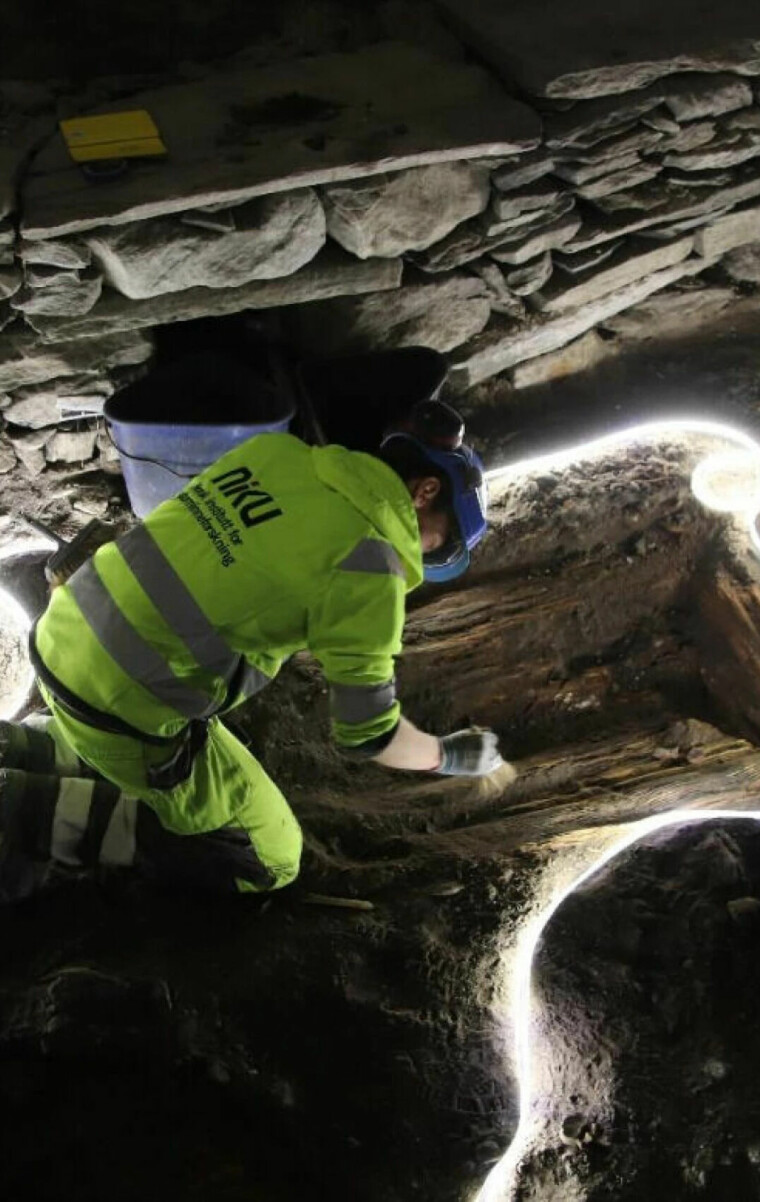
Jani Causevic from NIKU cleans a coffin lid. Artificial lighting helps him see.
Took more than a hundred years
As is the case with many large church buildings from this time, the construction work may have lasted for more than a hundred years.
History has it that British stonemasons contributed the most to the building of Stavanger Cathedral.

However, experts have found some special stylistic features in the church’s stone carving.
The features link the oldest parts of the church to Normandy and the Holy Roman Empire.
A man with long legs
Now, in 2023, archaeologists are well underway on a large new excavation outside Stavanger Cathedral. Other experts of various kinds are working on restoring the church itself.
The finds from Stavanger in the Middle Ages are still scarce from the time when the cathedral was built in the 12th century.
If more discoveries are made outside the cathedral, they could become important pieces in explaining how the city of Stavanger came into being, points out Hege Hollund, who is the project manager for the excavations.
In recent months, the archaeologists have found several skeletons – just as they had hoped.
‘The tall man’ is one of the more special discoveries archaeologists have made so far.
Who was this man with the very long legs?
He was probably buried in the 12th century, and therefore in one of the oldest Christian graves in Stavanger.
When he was dug up, the man turned out to be 190 centimetres tall, which was unusual at the time.
His skeleton is now being DNA analysed. That is how archaeologists can find out how old he was when he died, whom he was related to and where he came from.

In 1028, Erling Skjalgsson is slain by one of St. Olav's men. Is he buried at the cathedral?
Might they find Erling Skjalgsson?
Erling Skjalgsson married King Olav Tryggvasson's sister Astrid.
He already ruled Norway from the Sognefjord in the north to Lindesnes in the south. But he declined the king’s offer of the title of earl.
People called him ‘Rygjakongen’, that is, the king of the Rogaland (Rygenes).
Erling is portrayed as being humane towards his subordinates and faithful to his friends. But he was proud and unwilling to bow to any overlord.
St. Olav (Olav Haraldsson) did not get on well with Erling. In 1028, Erling was caught off guard by the king in Boknafjorden and slain by one of the king's men.
Through his daughter Ragnhild, Erling Skjalgsson nevertheless became the ancestor of the later Norwegian kings.
Might he be buried at Stavanger Cathedral?
References:
Perry Rolfsen's story Under skipet i Stavanger domkirke (Under the nave in Stavanger Cathedral) was published on the website of the Archaeological Museum in Stavanger in November 2022.
Kristine Ødeby et al: Archaeological investigations in the crawl space, Stavanger Cathedral. NIKU report, 2022. (NIKU is the Norwegian Institute for Cultural Heritage Research)
Pictures:
The photos from the excavation of the cathedral were taken by Anette Øvrelid, for the Archaeological Museum at the University of Stavanger. The images are at DigitaltMuseum.
The picture from the 1967 excavation was obtained from DigitaltMuseum.
The photo of Stavanger Cathedral from the outside was taken by Mykolastock / Shutterstock / NTB.
The drawing of Erling Skjalgsson's death was created by Peter Nicolai Arbo (1831-1892). The picture has been edited.
———
Read the Norwegian version of this article on forskning.no








